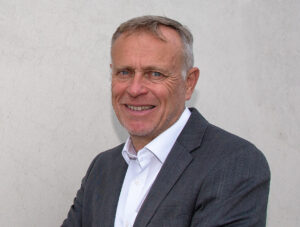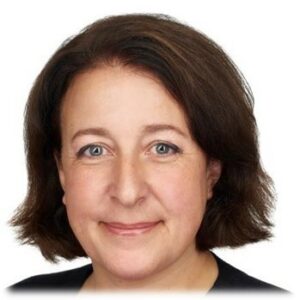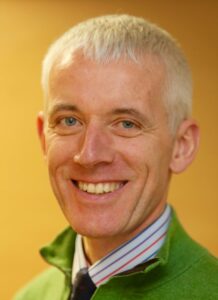Welcome to the first issue of the Theddlethorpe GDF Working Group Newsletter
Establishing the Working Group is just the starting point for engaging with the local community in a process to understand if the Theddlethorpe area could potentially be a suitable location for a Geological Disposal Facility (GDF).
Since the Working Group was formed on 12th October, we’ve been able to start talking with and listening to local people. That’s been an important step, and the first events have been well attended. We’ve met with a mix of people who have a range of views about the potential for a GDF in this area. Some people are clearly opposed to the idea, while others are interested to find out more about the project and the potential long-term impacts or benefits, and that’s what these events are about – providing early information and starting to answer questions to allow people to develop an informed view in due course.
We’re listening to what people have to say about GDF, and where we can we’re providing information about a wide range of topics, which I hope will address peoples’ concerns and help people develop their own informed view of the proposal. We wanted to start local engagement as soon as we could, so we’re visiting as many local venues as was possible to arrange at short notice. We’ve listened to feedback, so we’re already looking at future events in the area and how we promote them, so we can get to more places and reach more people.
We’re being asked very sensible questions, and whether people are in support of the proposal or against it at this stage, they have come along and engaged in good discussion and debate. My role as Independent Chair is to make sure that the process is open and transparent. When we’re out there talking with people, it’s about sharing information in a safe space for people to ask questions and trying to ensure that all views are valued and respected.
Many of those living close to the former gas terminal at Theddlethorpe have told us about their concerns, particularly about the potential impact a GDF might have on their homes and businesses, so we’re providing what information we can at this stage. In this newsletter and on our website, we will continue to update and share our frequently asked questions, as we continue the dialogue with local people.
This is the beginning of a dialogue that, if we move to a Community Partnership, will probably take many years. We need to learn any early lessons from our initial meetings, so that we can continue to engage with people effectively.
This newsletter contains information about the role of the Working Group, its members and how and where to find out more information and get involved in the debate.
I’d like to thank those people who have taken the time to come and meet us. We’ve had some valuable discussions and on behalf of the Working Group team, we look forward to meeting more of you in the weeks and months ahead.
Jon Collins
Independent Chair, Theddlethorpe GDF working Group

What is a Working Group?
A Working Group is formed early in the GDF siting process to begin local discussions and fact-finding with the community.
An early task for the Working Group will be to identify and propose a Search Area for further consideration by RWM with a Community Partnership. It will speak with citizens across the community to begin to understand issues or questions they might have about geological disposal. The Working Group will also recruit initial members for a Community Partnership that may be established in due course to take the process further forward.
Who’s in the Working Group?
- Jon Collins – Independent Chair
- Victoria McCusker – Independent Facilitator (from company Facilitating Change)
- Radioactive Waste Management* (the team includes Community Engagement Manager, Siting Manager and support team)
- Lincolnshire County Council
- East Lindsey District Council
- Theddlethorpe Parish Council
*Radioactive Waste Management (RWM) is a subsidiary of the Nuclear Decommissioning Authority – a Government organisation.
Community engagement begins
My name’s Kate Atha, I’m the Community Engagement Manager for the Theddlethorpe GDF Working Group. For me, community engagement is about having active engagement with people living in local communities. We will be out and about in the area ensuring people have the right information to help them understand more about the project.
It’s just over one month since the Working Group was formed. As the GDF had been a topic of debate locally since July, we wanted to get out into the local area as soon as we could. It wasn’t possible to do that until the Working Group was up and running.
Since the first of our walk-in events, we’ve met with more than 200 people. This has provided an opportunity to take factual information out into the communities, to start addressing any initial questions and to listen to what people have to say. I’m really grateful for the open-mindedness of our visitors, who have taken the time to come in and ask questions and have more in-depth discussions to find out more information, regardless of their position on the GDF proposal. Some people have come prepared with questions already in mind, while others are just curious about the project and want to find out more.
This is just the start of a conversation. The Working Group is looking to build on this initial dialogue and continue to talk. We’ve spoken with local residents, business owners and representatives from community groups, but we’re aware there are many more people keen to engage. If you’re part of community group or business and would like to hear from the Working Group or would like an information pack, please get in touch.
There are events in November on 24th (Legbourne) 25th (Theddlethorpe), 26th (Grimoldby) and 27th (Theddlethorpe).We expect to publicise more opportunities at various venues in the weeks ahead. Please check here for event details.
Open to Question: Jonathan Turner, RWM Chief Geologist.
Construction of a GDF is a complex technical undertaking. One of the key aspects in understanding if an area would be suitable is geology. It’s a topic that the Working Group is asked about, so we put some questions to RWM’s Chief Geologist, Jonathan Turner.
Why is geology so important for a GDF?
Our priority in delivering a GDF, is safety. There are several dimensions to safety: the safety when the GDF is being constructed, during operation, and in the long-term – what’s known as ‘post-closure’ safety. This means after the GDF has been filled, closed and sealed. The geology is a really important barrier for long-term safety.
When we say long-term, we’re talking about a period of hundreds of thousands of years for the small amount of the ‘longest-lived’ radioactive material. A ‘half-life’ is the amount of time it takes for half of the radioactive atoms to decay.
We are looking for two things to give us long-term safety – isolation and containment of the radioactive waste. Isolation is about putting the waste into solid rock, at least 200 metres but up to 1000 metres deep below the surface. In terms of containment (preventing radioactive materials making their way back to the surface environment), the geology, along with a series on engineered barriers, works to keep the radioactive materials within the deep geology so they can never return to the surface environment in concentrations which may cause harm. This is called the multi-barrier concept.
What type of geology is needed?
We’re looking for a stable geology through which fluids (water or gas) move only very slowly, if at all. In National Geological Screening, the British Geological Survey produced maps showing where potentially suitable rocks are found in England and Wales and so we know that there are some in this area of Lincolnshire. However, we don’t know enough yet to be certain that the geology would be suitable. If a Community Partnership is formed, one of the key tasks that RWM will undertake is to carry out a series of tasks to better understand the geology deep underground. This would start with surveys and in time move on to drilling a series of boreholes and collecting rock samples from deep underground.
What do we already know about the geology around Theddlethorpe?
We know quite a lot already because the UK has a rich history in pioneering geological science. The British Geological Survey (BGS) has been in existence for 200 years, and the UK was the first country to be geologically mapped so there are a lot of sources of data to draw on to better understand the geology in this area.
We know some information about the deep geology down to about 1500 metres based on BGS mapping, which includes information from previous survey work.
For this area we could have a relatively uncomplicated, ‘layer cake’ sequence of sedimentary rocks with a number of clay-rich layers that have been identified by the BGS as potential host rocks.
Everything we know about this type of geology suggests that it extends uniformly for many kilometres. But it’s important to say that we don’t know anything like as much as we will need to know about the deep geology of Lincolnshire in order to understand whether it could be suitable for deep geological disposal.
So, what else would we need to do?
We need to verify what we think we know about the geology and that’s crucial in determining if an area is suitable for a GDF.
In order to do that, we need to carry out a significant amount of detailed investigation. Before drilling boreholes, we would carry out seismic surveying that we will use to produce detailed ‘images’ of the rock layers to depths of more than 1000m. Seismic surveying in Switzerland of rocks that are similar to the Lincolnshire sequence of sedimentary layers, suggests we will be able to use it to produce detailed maps of faults and fractures that we didn’t know about. I am sure that whenever we carry out further investigative work, it will throw up some interesting new information.
FAQs:
Since the Working Group was formed, we have received a range of questions and in each newsletter, we will aim to address these latest hot topics. You can also find a larger selection of FAQs on the Working Group Website, which will be updated regularly.
Is a GDF safe?
Scientists and other authorities all over the world agree that geological disposal is the safest way to deal with ‘higher-activity’ radioactive waste (the most radioactive kind) for the long term. This international consensus comes after decades of scientific research.
The independent regulators, including the Office for Nuclear Regulation and the Environment Agency, will review the designs and safety cases for a GDF, the proposed site, and the science that informs them, to make sure it protects people and the environment both during operation and for the long-term after closure. A GDF will only be built if the independent regulators are satisfied.
How can you address local residents’ concerns about property sales?
We understand that communities might be concerned about property values. Most major infrastructure projects provide compensation for local residents and property owners who experience an impact on the value of their property as a result of new infrastructure.
If this project proceeds to the next stage (Community Partnership), RWM will work in partnership with the community to assess how a property support scheme would be implemented. RWM would seek independent advice and draw upon best practice and experience from other infrastructure projects, to ensure any potential scheme is appropriate for the local area.
What are the transport requirements of a GDF?
Throughout the lifetime of a GDF, transport links to the proposed facility will be vital. Transport would be required for construction materials for the underground and surface facilities and associated infrastructure; radioactive waste for disposal; movement of spoil and backfill materials, and personnel during all phases of the design, construction, operation and eventual closure of a GDF. Existing transport routes and networks within the East Lindsey Area would need to be enhanced to deliver a GDF. This could have significant benefits for local communities currently underserved by connections to the existing strategic road and rail networks, and which could make the area more attractive for development and inward investment.
If a rail line was needed to serve the GDF, where would it go?
Rail is one potential method for transporting packaged radioactive waste from current storage locations to a GDF. There are other options including road and sea transport which would need to be looked at, however the use of rail in preference to road to transport packaged waste is a key part of RWM’s Transport Safety Strategy. If additional rail connections are required, RWM, as part of a future Community Partnership would work to identify a suitable route to link to the existing rail network. This area does have a number of railway lines which were closed in the 1960s and early 1970s, but it’s too early to know if these routes could be re-instated or if they would be suitable for the requirements of a GDF. Any new or re-instated rail links could also be considered for other purposes, such as introduction of a passenger service or facilities for other freight traffic.
If a GDF is built, what are the job opportunities for local people going to be?
There will be a long lead-in time to the construction of a GDF of perhaps 20 years, as well as on-going construction and operation for over 100 years. This means there is ample time to work with the community on the training and education aspirations to develop a local workforce and ensure local people can and do get jobs at the facility. Because construction and operation run in parallel workers would live in the area for generations, not just a few years during the initial construction work. This would have a significant long-term impact on the local economy.

